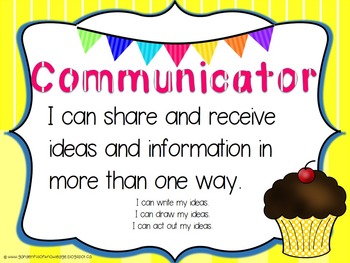
What does reflection look like for you?.
IB TRAITS HOW TO
Being Reflective teaches us how to grow and learn from both mistakes and from positive experiences. It's okay to make mistakes, making mistakes is part of learning. And then, how to pick yourself up and dust yourself off.
Model how to make mistakes, how to fail. This way the student sees you working through the Reflection process, and can use your examples as their models to learn from. Model the above thinking process by talking aloud to yourself, ask and answer yourself these questions about things you are doing throughout your day. Am I doing my best? Am I working my hardest?. Is the situation I am in a positive situation? If not, how can I make it a positive situation?. How can I change my behavior? Have student think of positive ways to make changes. Is what I'm doing appropriate? If so, explain why it is. Assist him/her with focusing on the following prompts: Ask students to stop and think throughout the day about their behaviors. Parents or teachers might decide to participate in shared writing, for 30 minutes each week and produce a writing piece together. For example, if one of the goals the students sets for herself is to improve her writing, her action might be to keep a journal and write in it for at least 10 minutes each night. You might want to list action that the student will take independently as well as action they will take to seek support. Make a list not only of the goals, but of specific actions that can be taken to achieve these goals. Consider the goals that students could set for the next term. Discuss it with them and truly consider their thoughts on their strengths and areas for improvement. They should have the opportunity to look at this document and consider it as well. Encourage students to spend some time reviewing their report card. Encourage students to make a one second everyday video *. 
They give thoughtful consideration to their own learning and consider their personal strengths and weaknesses in a constructive manner. They try to think about these things, and they make changes where they can. Students who are REFLECTIVE know what they are good at and what they’re not. While working on the IB Middle Years Programme's Personal Project in 10th grade, students make entries in a Reflection notebook for a record of the process. The IB Diploma Programme Extended Essay has a companion Reflection piece, and instructors in IB courses may ask for a reflection response after each lesson.

The learning process is not finished without reflecting on what has been learned! Blair students even write a reflection when they report their community service hours, and in their IB Diploma Programme service hours (CAS- Creativity, Action, Service). Reflection is a key component to IB learning.
What change can I make to benefit my world?. What will that look like this time around?. What do I see myself doing around others?. They are able to assess and understand their strengths and limitations in order to support their learning and personal development. Reflective people give thoughtful consideration to their own learning and experience. This "IB Learner Profile" also demonstrates how the IB approach is about much more than academic success. Each month at Blair one characteristic is highlighted. 
As an IB World School, at Blair all students, staff and teachers strive to demonstrate the attributes of Inquirer, Thinker, Caring, Balanced, Knowledgeable, Open Minded, Risk taker, Communicator, Reflective and Principled. The International Baccalaureate (IB) approach applies ten characteristics to describe an IB learner.







 0 kommentar(er)
0 kommentar(er)
